Power To Protein was the 2nd winner of the Best CO2 Utilisation 2022 Award, granted at the “Conference on CO2-based Fuels and Chemicals”, 23–24 March 2022, hybrid event.
The “Best CO2 Utilisation” award was granted for the fourth time to innovative and trend-setting CO2-based products and technologies. This year`s innovation awards 2022 went to the companies CleanO2, Avecom and Fraunhofer IGB. The Canadian company CleanO2 Carbon Capture Technology converts waste-CO2 into potassium carbonate in order to produce soap. Avecom from Belgium produces single-cell proteins made by micro-organismen also generated from CO2. The German Fraunhofer Institute IGB developed a process for the selective incorporation of CO2 into highly complex molecules.
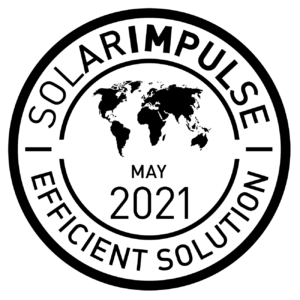
POWER TO PROTEIN has received the “Solar Impulse Efficient Solution” Label, an award for clean and profitable solutions.
POWER TO PROTEIN, a sustainable production of valuable proteins for the human food industry, developed by AVECOM was attributed the “Solar Impulse Efficient Solution” Label following an assessment performed by external independent experts and based on verified standards. It is thereby joining the #1000solutions challenge, an initiative by the Solar Impulse Foundation to select solutions that meet high standards in profitability and sustainability and present them to decision-makers to fast-track their implementation.
Power-to-Protein is about closing this artificial nitrogen cycle by direct N upcycling as microbial protein.
The basis is a highly efficient microbial resynthesis process with a mixed culture of bacteria that use hydrogen as an energy source.
Idea holder and emeritus professor at Ghent University, prof. dr. ir. Willy Verstraete states:
“The technology for recovery of reactive nitrogen as microbial protein is available but a change of mindset needs to be achieved to make such recovery acceptable.”
The supply of sufficient food, energy and water present huge challenges worldwide. There is no obvious universal solution. Rather, what will be needed are local, situation-oriented tailored solutions, based in part on creative, cross-sectoral thinking. In first instance, this approach calls for a precise picture of the relevant raw material streams in a defined area. Once this is obtained, the options can be defined. One of these options could be Power-to-Protein, which involves:
In this manner, an increasingly scarce product – protein – is created from residual materials and/or energy. A key link in the water-food- nexus.
Coupling the Power-to-Protein to the wastewater cycle, in which ammonium is extracted from the reject water from the sludge treatment.
NH4+ Ammonium is present in abundance in our wastewater and, in today’s situation, is mostly converted to nitrogen gas via nitrification and denitrification. WWTP treatment sludge is currently digested and used for the production of biogas by the Energy Factory, the initiative of the Dutch . The sludge treatment’s reject water contains high ammonium concentrations which can be efficiently recovered by means of air stripping, for example.
H2 Hydrogen can be produced via electrolysis of water, for instance using surplus electricity during off-peak hours. It can also be produced for example via steam reforming of biogas, which also results in the production of carbon dioxide (CO2).
CO2 Carbon dioxide is also released in the upgrading of biogas to bio-methane. There are moreover innumerable other potential sources in urban and industrial environments.
The pictures show a five-litre reactor set up at the Avecom laboratory in Ghent. The reactor can be seen as an ideally mixed reactor, into which all the raw materials, with the exception of ammonium, are fed as gasses.
The reactor contains a mixed culture of hydrogen-oxidizing bacteria which, to , is stable. It is therefore not a mono-culture and sterile working conditions are not required.
The images below show the microbiome under the microscope and the harvested and dried protein produced by the reactor. This protein has so far been examined once for its amino acid composition.
The single-cell protein is a protein-rich feed (crude protein content: 60-80%) that has an amino acid profile that is comparable to that of animal protein and richer than that of plant protein.
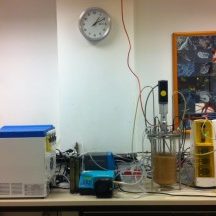
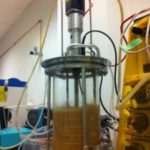
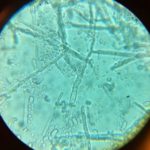
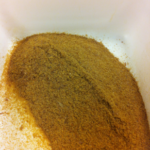
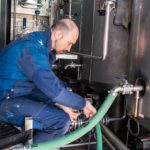
• Ammonia recovery by air stripping
• H2 and O2 produced on site with water electrolysis
• Reactor volume 400 L
• Productivity of 1 to 2 kg dry biomass per day
• 2 testing sites
About 1-2% of the total world energy is used to produce reactive nitrogen (fertilizer) by means of the Haber-Bosch process. This process accounts for 100 Mt of the current anthropogenic sources of nitrogen, while another 35 Mt results from biological crop fixation. Yet of this 135 Mt total, only 14 Mt is consumed as vegetable protein and 10 Mt as animal protein; this represents a mere 16% net efficiency.
These massive losses in the nitrogen cycle are largely due to losses during primary (plant) agriculture (runoff, leaching, volatisation and denitrification). Moreover, the nitrogen that enters the waste streams is currently mainly converted to dinitrogen gas rather than reused for other purposes such as producing protein.
In view of the increase in the world population, the vulnerability of the conventional crop production in the context of climate change, and the shifts of the population to mega-cities, there is a strong case for a re-examination of the current methods of destruction of reactive nitrogen in the sewage and waste treatment plants. Indeed, by up-grading he treatment plants to factories in which the incoming materials are first deconstructed to units such as ammonia, carbon dioxide and clean minerals, one can install a highly intensive and efficient microbial re-synthesis process in which the used nitrogen is harvested as microbial protein (at efficiencies close to 100%). The latter can then be used for feed and food purposes. In essence, the technology is available but a change of mindset needs to be achieved.
The perception of wastewater as not being waste, but rather a resource for water, energy, nutrients and other components, is becoming increasingly widespread. In a circular economy the recovery and reuse of such resources is key. The Power-to-Protein concept fits in with the circular economy and is focussed on the recovery and valorisation of ammonium from the wastewater cycle. It also fits in KWR’s research programme within which, over the past few years, resource recovery has come to play an increasingly important role. Take for instance the value chains for phosphorus, nitrogen and cellulose from municipal wastewater, for lime and iron pellets from drinking water production, and for metals and salts from industrial process water; but also take the maximisation of biogas production from municipal and industrial wastewater.
Into the future, renewable energy sources will gradually account for a growing share of our energy consumption. Some energy experts even foresee an ‘all-electric’ future, based on wind, solar and biomass energy. The storage of energy is becoming an important factor, and hydrogen is a prime candidate to function as an energy carrier. These developments will perhaps lead to a hydrogen economy.
The Power-to-Protein concept in every way fits in with this future resource-recovery and hydrogen-economy scenario.
This activity is co-financed with TKI-funding from the Topconsortia for Knowledge & Innovation (TKI’s) of the Ministry of Economic Affairs.
Project website: https://www.powertoprotein.eu/